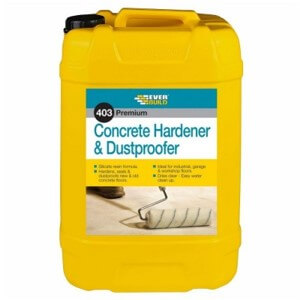Concrete Hardener and Sealer COSHH Assessment Form

A three-page COSHH Assessment Form for Concrete Hardener and Sealer, with some example text reading:
Spillage and environmental:
Not regarded as dangerous to the environment.
Mobility: Store upright and ensure the container is tightly closed.
Accidental release: Mop up and dilute the residue with water.
Concrete hardeners and sealers are crucial in enhancing the durability, aesthetics, and overall performance of concrete surfaces, particularly flooring applications. These products serve multiple functions, including hardening the surface, minimising dust accumulation, preventing staining, and protecting against wear and environmental damage.
Concrete hardeners work by chemically reacting with the calcium hydroxide present in the concrete mixture. This chemical reaction forms calcium silicate hydrate, which results in a dense, robust surface. This process increases the surface hardness and enhances the overall longevity of the concrete.
By bonding with loose particles and stabilising the surface, hardeners significantly reduce the release of fine dust particles that can otherwise create messy and unhealthy environments. This characteristic makes hardeners particularly valuable for industrial and commercial settings where dust control is crucial for safety and cleanliness.
In high-traffic areas such as warehouses, retail spaces, and public facilities, concrete hardeners are essential for increasing the material's resistance to abrasion. This improved resistance allows the surface to withstand the impact of heavy foot traffic, vehicles, and equipment, thereby extending its lifespan and maintaining its integrity.
Concrete hardeners also mitigate the risks of cracking, chipping, and other surface damage caused by environmental stressors. By promoting a strong and stable surface, they contribute to the overall durability of concrete structures under a wide range of conditions.
Concrete sealers create a protective barrier on the surface that effectively prevents the absorption of liquids, oils, and substances that might otherwise lead to staining. This is especially important in environments where spills occur daily, such as garages, kitchens, and commercial kitchens.
Sealants significantly reduce the porosity of concrete, minimising water absorption. This is critical for preventing moisture-related issues such as mould growth and structural instability, particularly in climates with freeze-thaw cycles. Sealers also help preserve the integrity of the concrete over time by keeping water out.
Sealers not only protect concrete but can also enhance its visual appeal. Depending on aesthetic preferences, they bring out the concrete's natural colour and can be formulated to provide a glossy or matte finish. This enhancement makes the flooring more attractive and easier to maintain, as sealed surfaces can be cleaned more effortlessly.
In addition to their protective qualities, sealers control dusting, particularly when concrete hardeners haven’t been applied. By sealing the surface, they help trap any remaining particulates, thus further enhancing the cleanliness of the environment.
This document is:
- Recognised by local authorities
- Recognised by principal contractors
- Suitable for CDM sites
- Approved by H&S managers
If you want others to have confidence in your company, download and buy the correct documents today.
As with all our documents, our risk assessments are in Word™ format, available for instant download and use, and only need to be bought once.
Once you buy and download this document, it’s yours for life to use over and over again.
Why not browse the HSEDocs catalogue of method statements, risk assessments, COSHH assessments, or industry-specific packages?
And for safety training relevant to your job, visit our online training courses.
GET THIS DOCUMENT
£8.99+VAT
- Available in Word™
- Fully customisable
- Add your Company Logo
- UK & EU Compliant

 CART
CART 